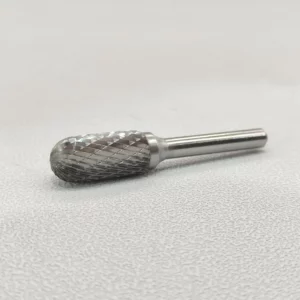Burr bits for steel are indispensable tools in various industries, offering precise cutting and deburring capabilities. However, to maintain their optimal performance, proper care and maintenance are essential. In this guide, we’ll explore effective strategies for preserving the efficiency and longevity of burr bits used on steel surfaces.
Understanding Burr Bits for Steel Before delving into maintenance techniques, it’s crucial to understand the role of burr bits in steel processing. Burr bits are specialized cutting tools designed to remove burrs, sharp edges, and excess material from steel surfaces. They come in various shapes and sizes, each suited for specific applications, such as drilling, milling, or grinding.
Regular Inspection The first step in maintaining burr bits for steel is regular inspection. Before and after each use, carefully examine the burr bits for any signs of wear, damage, or dullness. Look for chips, cracks, or uneven edges that could compromise performance. If any issues are detected, address them promptly to prevent further damage.
Proper Cleaning After use, it’s essential to clean burr bits thoroughly to remove debris, metal shavings, and other contaminants. Use a brush or compressed air to dislodge stubborn particles, taking care to reach all crevices and grooves. Avoid harsh chemicals that could damage the cutting edges or coatings of the burr bits.
Lubrication and Cooling During operation, burr bits generate friction and heat, which can accelerate wear and reduce efficiency. To mitigate this, ensure proper lubrication and cooling. Apply cutting oil or coolant to the steel surface and the burr bits to reduce friction and dissipate heat. This not only improves cutting performance but also extends the life of the burr bits.
Sharpening and Reconditioning Over time, burr bits for steel will inevitably become dull due to repeated use. To restore their cutting effectiveness, sharpening and reconditioning are necessary. Use a sharpening stone, grinder, or specialized sharpening tool to hone the cutting edges to their original sharpness. Be sure to follow the manufacturer’s recommendations and guidelines for sharpening angles and techniques.
Proper Storage When not in use, store burr bits in a clean, dry environment away from moisture, dust, and corrosive substances. Consider investing in a dedicated storage case or organizer to keep burr bits organized and protected from damage. Avoid storing them loosely or jumbled together, as this can lead to nicks, scratches, or other forms of wear.
Regular Maintenance Schedule To ensure consistent performance, establish a regular maintenance schedule for burr bits used on steel. This may include routine inspections, cleaning, lubrication, and sharpening at predetermined intervals based on usage frequency and intensity. Adhering to a maintenance schedule helps prevent premature wear and ensures that burr bits are always ready for optimal performance.
Training and Education Lastly, proper maintenance of burr bits for steel requires knowledge and skill. Provide training and education to personnel responsible for using and maintaining these tools. Ensure they understand the importance of maintenance procedures and how to perform them correctly to maximize the lifespan and efficiency of burr bits.
In conclusion, maintaining burr bits for optimal performance on steel is essential for achieving high-quality results and prolonging the life of these valuable cutting tools. By following proper maintenance techniques, including regular inspection, cleaning, lubrication, sharpening, storage, and adherence to a maintenance schedule, users can ensure that burr bits continue to deliver precision and efficiency in steel processing applications.
